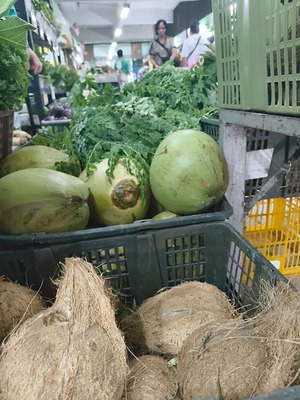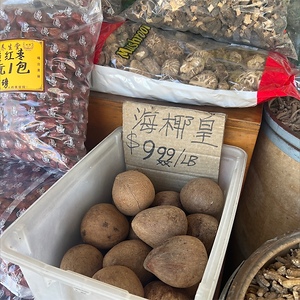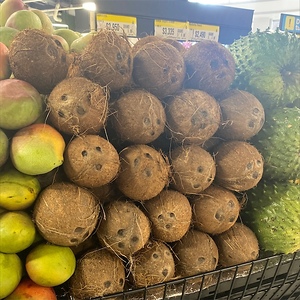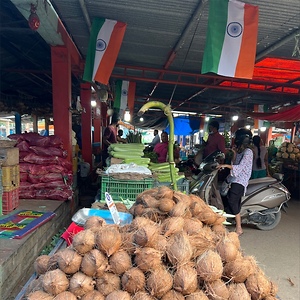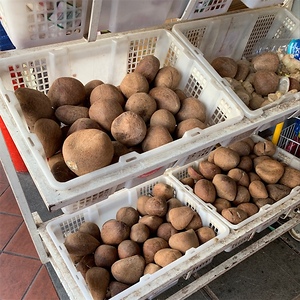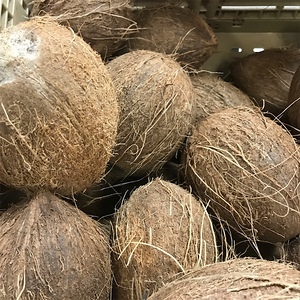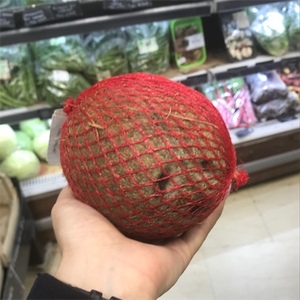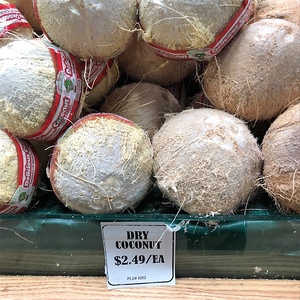

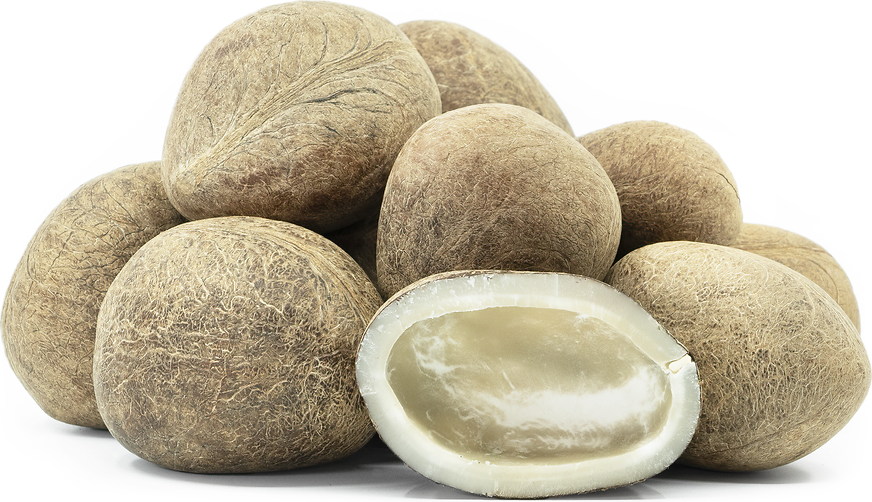
Dry Coconut
Estimated Inventory, lb : 0
Description/Taste
Dry coconuts are small to medium in size, averaging 7 to 12 centimeters in diameter and 10 to 13 centimeters in length, and have an oval to oblong shape with blunt, curved edges. Each Dry coconut will vary slightly in size and shape, and the surface of the coconut is light brown, hard, and lightly wrinkled with a textured, rough feel. The exterior surface is also thin and fibrous but edible. Underneath the surface, a thin layer of concentrated, dried flesh lines the edge of the coconut with a hollow center. The flesh is comprised of ivory to off-white shades and has a dense, oily, greasy, and chewy consistency. Dry coconuts have a subtle aroma, and the entire kernel is edible raw. The flesh has a mild, rich, and neutral flavor with nutty, tropical nuances.
Seasons/Availability
Dry coconuts are available year-round.
Current Facts
Dry coconuts, botanically classified as Cocos nucifera, are the kernels of the coconut palm belonging to the Arecaceae family. The kernels are extracted fresh from mature coconuts and are dried using three main methods: kiln-drying, sun-drying, or smoke-drying. Before drying, the coconut kernels are around 50 percent water and 30 to 40 percent oil, and after drying, the flesh reduces to 4 to 5 percent water and 36 to 70 percent oil. Dry coconuts are known for containing stronger, more concentrated flavors, and in Asia, the dried kernels are known as Copra, Kopra, or Kohpra. Copra is famous for its use in producing coconut oil and is commercially made throughout Asia and Southeast Asia. Drying coconuts can take anywhere from a few days to around one year, depending on the drying method. In India, coconuts are dried slowly and are often sold whole. Dry coconuts are mostly grown for commercial processing, but some units are sold in fresh markets throughout Southern and Southeast Asia for culinary use.
Nutritional Value
Dry coconut is a source of manganese to develop connective tissues, fiber to regulate the digestive tract, folate to help produce red blood cells, and vitamin C to boost the immune system. The flesh also provides iron to build the protein hemoglobin for oxygen transport through the bloodstream, magnesium to control nerve functions, potassium to balance fluid levels within the body, phosphorus to build strong bones and teeth, and other nutrients, including zinc, calcium, riboflavin, and B vitamins. Beyond nutritional properties, Dry coconuts are processed into coconut oil, which is a popular ingredient in treatments for skin and hair. The oil is said to provide hydration, assist with dandruff, and add texture to lotions, soaps, and creams.
Applications
Dry coconut has a rich, nutty, and neutral flavor suited for fresh and cooked preparations. The entire kernel is edible and can be washed and sliced into thin pieces, served as an edible garnish. Dry coconut can also be shredded and sprinkled onto smoothies, salads, desserts, and puddings, or the flesh can be sliced into small pieces and added to various sweet and savory dishes. The dried flesh can be pressed into coconut milk or oil and infused into curries, soups, and sticky rice, or it can be added to cakes, sweets, custards, and cookies. In India, Dry coconut is used in kopra pak or coconut burfi, a sweet, bar-like dessert, or it is used in mirchi ka salan, a curry flavored with a paste of coconut, chile peppers, sesame seeds, and peanuts. It is also shredded and roasted as a topping for vegetable dishes, chutney, and various gravies. Dry coconut pairs well with spices such as cumin, turmeric, cardamom, paprika, and garam masala, herbs including cilantro, coriander, and dill, and aromatics such as garlic, ginger, shallots, and chile peppers. Dry coconut will keep up to six months when stored in a cool, dry, and dark place such as the refrigerator.
Ethnic/Cultural Info
In India, coconut trees were rumored to have been formed from a man stuck in the sky. According to a Hindu legend, a sage named Vishwamitra wanted to help King Trishanku ascend into the heavens, where the gods resided. It was the king’s dream to enter the heavenly realm, but as Vishwamitra sent the king into the sky through a Yajna or ritual, the god Indra became angered. When Trishanku arrived at the realm’s gates, Indra grabbed him and hurled him back to Earth. Vishwamitra saw the plummeting king and cried out for the king to stay where he was in the sky. The king stopped falling and remained hanging at a point in the sky between heaven and earth. Vishwamitra was unable to release the king from his aerial prison, so he placed a tall pole underneath the king to help keep him right side up. The king resided in the sky on the pole for the remainder of his life and eventually transformed into a coconut tree, with his head becoming the fruit and his beard being the fibers encasing the nut.
Geography/History
Dry coconuts are native to regions where coconut palms are grown. Coconut palms are thought to have originated in India and Southeast Asia and have been growing wild since ancient times. Coconuts spread naturally via ocean currents, and eventually, they were carried by civilizations along ancient trade routes and migratory paths as a natural water source. The art of drying coconuts has been practiced for centuries as it was a natural method to extend the coconut’s storage life for culinary use. In the 1860s, Dry coconut was exported to Europe as a substitute as an edible fat when there was a dairy shortage. It was also used in the late 19th and early 20th centuries as a source of oil and was introduced to the United States. By the late 20th century, Dry coconut was used to make one of the most essential oil sources worldwide. With its rise throughout history as a commercial product, Dry coconuts were extensively cultivated throughout Southeast and Southern Asia, especially in Malaysia, India, Indonesia, the Philippines, and Papua New Guinea. Today, Dry coconuts are sold in fresh markets in Asia as a culinary good and are also created for commercial processing. The Dry coconuts featured in the photograph above were sourced through a market in Kohima, the capital city of Nagaland, India.
Recipe Ideas
Recipes that include Dry Coconut. One
| Indian Cuisine |
|
Okra with Dry Coconut ~ Bendakaya Kobbari Karam |
| Sailu's Kitchen |
|
Spiced Dry Coconut Powder (Endu Kobbari Podi) |
| Immaculate Bites |
|
Homemade coconut Milk |
| Devnaa |
|
Apricot and Coconut Truffles |



